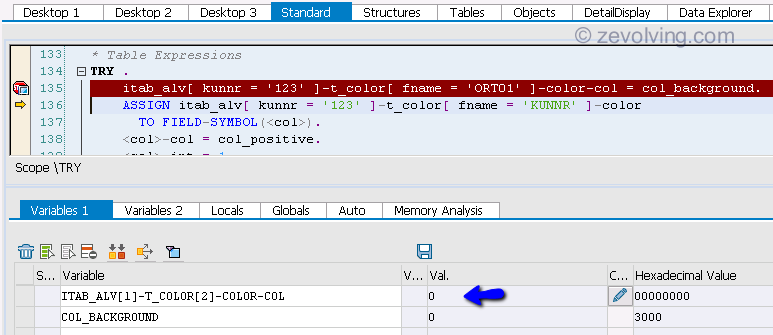

Here when you say LOOP AT ITABLE, then the internal table ITABLE is read line by line. One of the ways of accessing or reading the internal table is by using LOOP-ENDLOOP. We will now see how do we actually use the data or retrieve the data from the internal tables. We are now familiar with the creation of internal tables and populating them with data. So, to copy contents of internal tables with header line the syntax becomes, itab1 = itab2. Incase of internal tables with header line we have to use inorder to distinguish from work area. These copy the contents of ITAB1 to ITAB2. A more simpler way is to usetany of the following syntax’s. The contents of one internal table can be copied to another by using the APPEND LINES or INSERT LINES statement. Here, the work area or INITIAL LINE is inserted into internal table at index. You can specify the position at which the new line is to be added by using the INDEX clause with the INSERT statement.


INSERT statement adds a line/work area to the internal table. Else COLLECT acts similar to APPEND and SY-TABIX contains the index of the processed line. Value of SY-TABIX is changed to the row of the original entry. Suppose there is already an entry having a key same as the one you are trying to append, then a new line is not added to the table, but the numeric fields of both the entries are added and only one entry corresponding to the key is present. Incase of tables with Header line, INTO option is omitted. Generally COLLECT is used while inserting lines into an internal table with unique standard key. space for col1 and 0 for col2.ĬOLLECT is another form of statement used for populating the internal tables. Then APPEND initial line, adds a line initialized with respect to the data type of the columns, i.e. Here, col1 is an character and col2 is a integer. Initial lines adds a line initialized with the correct value for its type to the table. The system variable SY-TABIX contains the index of the appended line. Here work area or the Initial Line is appended to the internal table. Using the APPEND statement we can either add one line from another work area to the internal table or we can add one initial line to the internal table. The first method available is the use of the APPEND statement. There are various methods available to populate tables Now that we have successfully created some internal tables, let us see how do we populate them with some records. Internal table itab is created Populating Internal Tables Here the table is created with an Header line, by default.Įxample – Data : Begin of itab occurs 10, Let us now create an internal table with a structure of our own. Here a table itab is created having a structure same as that of sline Please note “with header line” is optional. Here an internal table itab is created of the type line with a header line. The existing table could be a standard SAP table, a Z table or another internal table.Įxample- DATA itab TYPE line OCCURS 10 with header line. You can create an internal table by referring to an existing table. Extra records are written out to paging area and can effect performance To actually create an Internal Table itab use the following command- Data itab type line occurs 10.Īn internal table itab is created with the structure of line.Besides declaring the structure of an internal table, the OCCURS clause also defines how many table entries are maintained in main storage(in this case 10). The TYPES statement creates a structure line as defined.

Let us now create a Internal table itab using the TYPE statement. There are many ways to create an Internal Table.


 0 kommentar(er)
0 kommentar(er)
